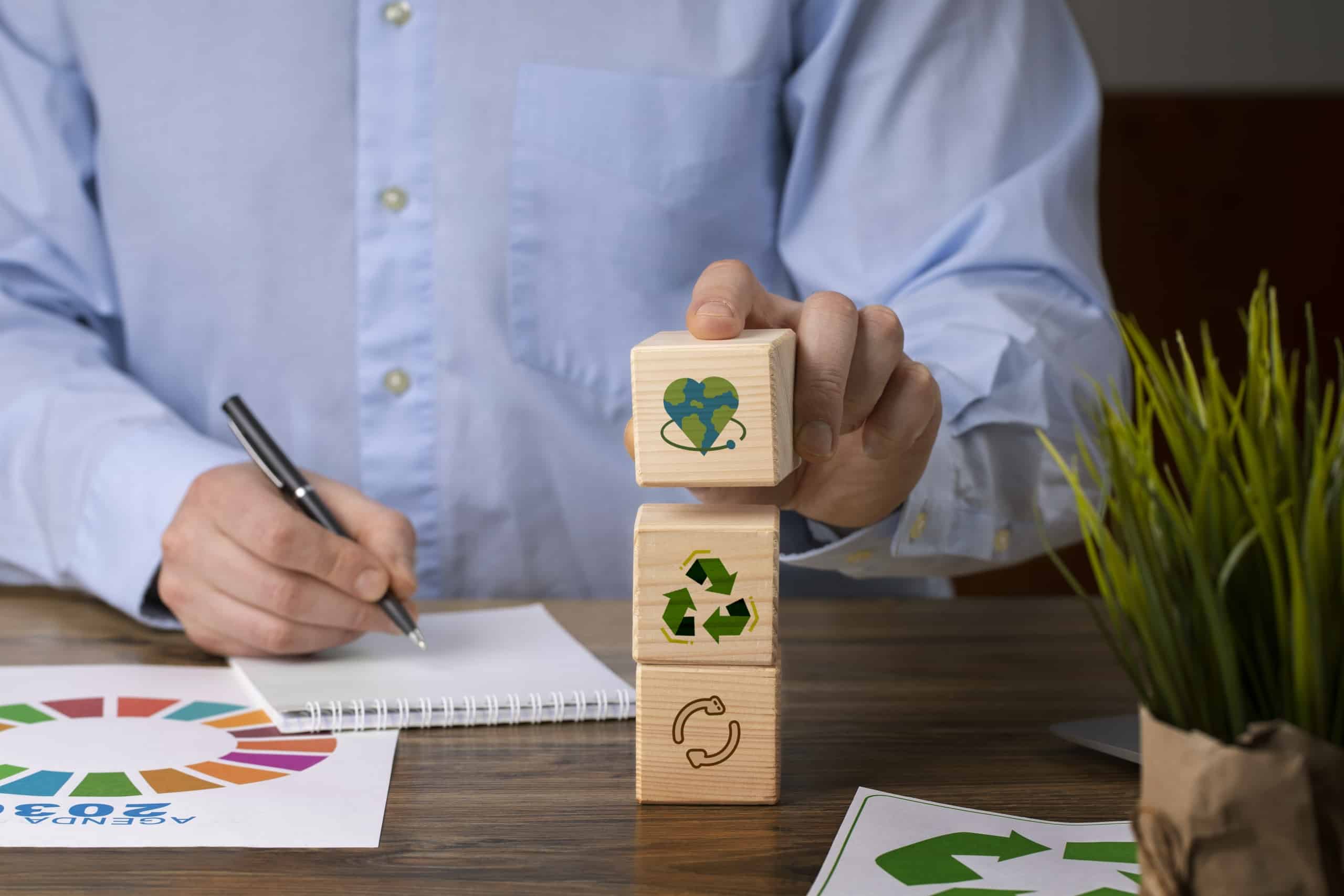1. Precision in Resource Use
Exact resource management is essential in the production of wet wipes, not only to save costs but also to minimize environmental effect. The quantity of water, electricity, and raw materials consumed at each stage of manufacturing is meticulously measured and controlled by sophisticated sensors and monitoring systems built into modern machinery. Because every resource is maximized by these precisely designed equipment, producers are able to create large quantities of wet wipes without generating unnecessary waste. Real-time feedback loop integration enables operators to continually modify and optimize the procedure, guaranteeing that no needless materials are used. This capacity is especially helpful in sectors of the economy where even little changes in the way resources are used may result in large wastes of energy and raw materials.
For instance, devices that recycle and reuse water throughout the manufacturing process assist firms in drastically reducing their water usage in areas with limited water resources. This reduces operating expenses while tackling one of the biggest environmental issues in the wet wipes industry. Energy-efficient equipment also contributes to power conservation and a reduction in greenhouse gas emissions by monitoring energy consumption and adjusting it as needed. Companies may more easily achieve legal requirements and environmental objectives while maintaining high manufacturing productivity by using energy and water precisely.
Furthermore, careful resource management encompasses not just energy and water but also raw resources like chemicals and fibers. With the capacity to distribute precise amounts of raw materials, automated devices can now eliminate surplus that would otherwise go to waste and prevent abuse. Wet wipes manufacturers may minimize the total environmental effect of their manufacturing process by concentrating on accuracy in all aspects of resource utilization. This will help them to guarantee that they are not only producing efficiently but also aligning their operations with global sustainability initiatives.
2. Energy-Efficient Operations
In the wet wipes sector, energy-efficient processes are fast becoming essential to sustainable production. Wet wipes manufacturers are turning to cutting-edge machinery that uses less electricity while maintaining or even increasing production levels as energy prices keep rising and demand to decrease carbon footprints mounts. Modern technology included in these energy-efficient machines optimizes power usage at every step of production, guaranteeing that only the minimum amount of energy is consumed at any given moment.
Integrating energy recovery systems into manufacturing machines is one of the biggest developments in this field. These devices use the extra heat produced during the manufacturing process to power subsequent phases of the process, including sealing or drying. Wet wipes manufacturers may significantly decrease the amount of external power needed to operate their equipment by recycling energy in this manner, which lowers energy costs and leaves a reduced carbon imprint. To further reduce wasteful energy use, energy-efficient machines often use smart sensors or standby modes that automatically modify power usage depending on production requirements.
It is evident that energy-efficient processes have positive environmental effects. Reducing greenhouse gas emissions is closely correlated with lower energy use, and this is one of the main ways to fight climate change. Energy-efficiency certificates are now often found on many devices, which helps businesses comply with strict environmental rules and improves their corporate social responsibility (CSR) profiles. Wet wipes manufacturers seeking to match their practices with sustainability trends may find that energy-efficient operations provide them a competitive edge as stakeholders and customers become more environmentally sensitive.
Apart from the favorable effects on the environment, energy-efficient technology has noteworthy financial advantages. Wet wipes manufacturers may save operating expenses by using less power, which they can then reinvest in other parts of the company or pass on to customers. These cutting-edge devices are an excellent long-term investment for businesses trying to boost both their bottom line and their environmental credentials, since the savings from consuming less energy may eventually cover the original cost. Energy-efficient processes, therefore, provide makers of wet wipes a win-win situation that benefits the environment as well as their bottom lines.
3. Minimizing Waste Generation
One of the best ways that contemporary wet wipes manufacturing equipment supports environmental sustainability is by reducing waste production. There is a lot of waste produced by traditional manufacturing processes, such as extra materials, damaged goods, and off-cuts. But thanks to sophisticated gear, wet wipes manufacturers can now significantly minimize waste by using more accurate cutting, folding, and packing procedures. As a result of this change, businesses are able to reduce their environmental effect while simultaneously increasing production efficiency since there is less waste and hence less needless resource use.
The creation of devices that can recycle unused materials straight back into the manufacturing cycle is one of the major advances in waste reduction. For example, some wet wipes machines include systems that gather and reprocess leftover material scraps or extra fibers, feeding them back into the start of the production line. The quantity of trash that is dumped is greatly decreased by this closed-loop system, which guarantees that almost no material is lost throughout the manufacturing process. In an industry that employs a lot of non-woven textiles and other materials that, if discarded, would add to the accumulation of garbage in landfills, these zero-waste solutions are especially crucial.
Furthermore, contemporary machinery uses cutting-edge folding and cutting techniques to minimize the quantity of waste material produced during manufacturing. Older techniques often produced extra margins or irregular cuts that were thrown away. However, more recent devices are able to precisely cut material down to the millimeter, guaranteeing that every wet wipe uses the most material possible. This methodical approach not only minimizes waste but also guarantees consistency in product quality, which is essential for preserving customer confidence and brand image.
Packaging is another area where machines are reducing waste. Conventional packing techniques often use more material than is required, which raises expenses and wastes resources. Thanks to developments in machine automation, producers may now design packaging that employs the least amount of material possible without sacrificing the product’s protection or shelf life. Certain machines, for instance, include automatic wrapping systems that modify the size of the package to precisely match the product’s specifications, doing away with the need for extra plastic or paper.
Modern machinery is assisting wet wipes makers to connect their operations with the rising environmental concerns by minimizing waste at every step of production, from material consumption to packing. Reducing waste not only helps the environment by lowering resource consumption and landfill emissions, but it also enables manufacturers to reduce expenses and run more profitably. This emphasis on waste reduction is a critical first step in developing an ecologically responsible, more sustainable production model that benefits wet wipes manufacturers as well as consumers.
4. Smart Integration for Sustainable Production
Wet wipes production is being revolutionized by the incorporation of smart technologies, which allow wet wipes manufacturers to monitor, optimize, and make real-time adjustments to operations. AI-powered systems and smart equipment with Internet of Things (IoT) capabilities are converting conventional factories into very productive, environmentally friendly manufacturing environments. These intelligent devices gather and process data continually, enabling wet wipes manufacturers to make quick modifications that limit waste, cut down on resource use, and boost productivity. The next wave of sustainable production is being propelled by this degree of automation and control.
Monitoring and optimizing energy usage is one of the main advantages of smart integration. Sensors included into smart machines monitor energy use throughout the manufacturing process, pointing out inefficiencies or places where power consumption may be cut. For instance, the system may automatically limit energy output or switch to a reduced-power mode if a machine is running below capacity or during times of low demand. By reducing needless power use, this dynamic energy management helps manufacturers not only minimize their carbon footprint but also operating expenses. These little changes add up to substantial energy savings over time.
Apart from energy management, intelligent integration improves material utilization accuracy, which lowers waste production. Real-time tracking of raw material inputs by machines guarantees that only the minimal quantities of commodities, such as fibers and chemicals, are utilized throughout each stage of manufacturing. This reduces the production of faulty or surplus goods in addition to preventing the abuse of resources. Smart machines can also more correctly predict material demands by monitoring data patterns, which lowers the chance of overordering materials that can go unused if not utilized promptly. By ensuring that every resource is utilized as effectively as possible, smart technologies promote environmental and economic sustainability.
Improved maintenance procedures are another benefit of smart integration for factories, which helps to promote more environmentally friendly output. Wet wipes machines can detect possible problems before they result in malfunctions or inefficiencies thanks to predictive maintenance, which is fueled by artificial intelligence and real-time data analysis. By taking a proactive stance, you can guarantee that your machines are running as efficiently as possible, which lowers downtime and avoids waste from unplanned problems. For instance, a sensor may send out notifications to technicians so they can solve the problem before it becomes worse if it notices a drop in system performance or an unusual trend in resource utilization. As a result, there are fewer production line interruptions and uninterrupted, effective operations with little effect on the environment are guaranteed.
Furthermore, by providing thorough monitoring and analytics on environmental variables, smart machines assist firms in meeting sustainability targets. By monitoring important sustainability metrics including energy use, water use, and trash production, these systems may provide firms a comprehensive understanding of their environmental effect. Companies may establish quantifiable targets for lowering their environmental impact and monitor their success over time thanks to this data-driven strategy. Additionally, it gives businesses a competitive advantage in the market by enabling them to maintain compliance with ever-tougher environmental certifications and laws.
In summary, smart integration is making the manufacture of wet wipes more accurate, efficient, and flexible, which makes the process more sustainable. Resource waste, energy consumption, and environmental impact will continue to decline in the sector as more wet wipes manufacturers implement these technologies. In addition to being better for the environment, this move toward more intelligent and sustainable manufacturing also puts businesses in a position to prosper in a market where environmental concerns are growing.
5. Supporting the Shift to Biodegradable Materials
Wet wipes manufacturers are under increasing pressure to switch from conventional, synthetic materials to biodegradable substitutes as consumer demand for environmentally friendly goods increases. But this move requires more than simply a change in basic materials; new technology must be developed to handle these new, often more delicate materials without sacrificing effectiveness or quality. The usage of biodegradable and compostable materials is now supported by the engineering of modern wet wipes machines, which makes it simpler for producers to switch to ecologically friendly manufacturing practices.
The fact that biodegradable materials have different qualities from conventional materials like plastic or synthetic fibers is one of the main problems with them. Because biodegradable fibers may be less flexible and more brittle, equipment that can handle these materials carefully without harming them are needed. As a result, wet wipes manufacturers are investing in equipment with specific parts made to effectively handle biodegradable ingredients. To prevent overstressing or tearing of the fibers, these wet wipes machines, for instance, are equipped with sophisticated control systems that adjust the tension and speed at which the material passes along the manufacturing line. By doing this, the finished product is guaranteed to maintain its integrity and satisfy customer demands for environmental norms.
The creation of machines that can seamlessly transition between various kinds of materials is another breakthrough that is assisting the move to biodegradable materials. Wet wipes are still produced by a large number of businesses, some using conventional synthetic materials and others using biodegradable fibers. Wet wipes manufacturers can now swiftly and effectively swap between these various materials without requiring a lot of retooling or downtime thanks to advanced machinery. For wet wipes manufacturers hoping to maintain large production levels and satisfy both traditional and environmentally sensitive consumers, this flexibility is essential.
Additionally, the packaging process needs to be improved as a result of the switch to biodegradable materials. Eco-friendly materials are needed for both the wipes and the packaging of biodegradable wet wipes. Modern machinery can handle packaging composed of compostable or biodegradable polymers, guaranteeing that the product as a whole—from wipe to wrapper—aligns with sustainability objectives. For businesses that promote themselves as environmentally conscious, this also has the additional advantage of strengthening their brand statement. More care is being taken in the design of packaging equipment to ensure that the least amount of material is utilized, which will further reduce waste and improve the environmental advantages of biodegradable goods.
Encouraging the use of biodegradable materials necessitates innovative production-related waste management techniques. These days, wet wipes machines are being created to make sure that any extra biodegradable material produced during manufacturing may be put to better use than being thrown away. By using a closed-loop strategy to material use, wet wipes manufacturers may decrease waste throughout the wet wipes manufacturing process in addition to producing biodegradable goods. By shredding and recycling any leftover material or faulty wipes back into the manufacturing cycle, these machines make sure that very little biodegradable material ends up in landfills.
Lastly, the use of biodegradable materials in the manufacture of wet wipes is consistent with the overarching objectives of lowering plastic waste and encouraging environmentally friendly production methods. Wet wipes manufacturers using devices that facilitate the use of biodegradable materials will be in a better position to fulfill the needs of customers and regulatory agencies that are pushing for greater environmental responsibility. Businesses who adopt this change will not only lessen their influence on the environment but also gain popularity among customers who are becoming more and more eco-aware and looking for items that reflect their beliefs.
In conclusion, the wet wipes sector has undergone a significant revolution with the move to biodegradable materials, and sophisticated technology has been important in enabling this change. Wet wipes manufacturers may greatly lessen their environmental impact while maintaining high-quality product production by investing in machinery built to handle these materials. The development of materials and equipment is a crucial first step toward the production of wet wipes in a more sustainable future.
6. Cleaner Manufacturing Environments
Wet wipes manufacturers are prioritizing cleaner manufacturing facilities in an effort to reduce their environmental impact while maintaining high production standards. By integrating technology that lowers air and noise pollution, controls emissions, and improves overall cleanliness in the manufacturing process, advanced machines are playing a crucial part in establishing these cleaner surroundings. This helps the environment and makes factories safer and healthier places for workers to work.
The incorporation of sophisticated filtration and emission control technologies into contemporary gear is one of the most noteworthy advancements in establishing cleaner production environments. Wet wipes machines have the potential to emit chemicals, airborne particles, and potentially microplastics into the surrounding environment. Modern machines, on the other hand, have filtering systems integrated into their designs that collect and process dangerous pollutants before they are emitted. VOCs and other pollutants, for instance, may be absorbed by exhaust systems equipped with activated carbon filters, keeping them from escaping into the environment. This guarantees adherence to ever-tougher air quality rules and significantly reduces the environmental effect of the wet wipes production process.
Apart from mitigating air pollution, modern machinery is also getting more noise- and noise-free, which helps reduce noise pollution, which is a major problem in conventional production environments. Many contemporary machines include noise-dampening features that lower the total decibel level of manufacturing processes, such as insulated casings and quieter motor designs. This is especially crucial in places with high population densities or industrial zones close to residential areas, since noise pollution may pose a serious threat. In addition to assisting businesses in abiding with local laws, noise reduction also improves employee satisfaction at work, which may lower stress levels and boost output.
Reducing waste and spillage during production is another way to create cleaner industrial environments. In the past, producing wet wipes may have required substantial liquid, fiber, or chemical leaks, which might have led to dangerous spills that could have harmed both the environment and the workers. However, more sophisticated containment mechanisms are now standard on contemporary machinery, preventing spills and leaks. Precise dosing mechanisms in these systems guarantee that chemicals and liquids are delivered precisely, avoiding overflows or excessive consumption. Wet wipes manufacturers can manage these materials appropriately to keep work areas clean and lower the chance of unintentional environmental contamination.
Furthermore, via automatic cleaning and maintenance cycles, smart integration in contemporary machinery provides cleaner production environments. These days, machines may plan maintenance at the best periods to keep the manufacturing line clean and hygienic, or they can self-clean. Automated cleaning systems assist in preventing the accumulation of dust, fiber fragments, and residues that may otherwise have an impact on the cleanliness of the environment and the quality of the products. In the wet wipes business, this is especially crucial since it guarantees that manufacturing adheres to hygienic regulations. It also lessens the need for manual cleaning, which sometimes involves using harsh chemicals or detergents.
Finally, advancements in energy management technologies that lower the factory’s total carbon footprint help to promote greener industrial environments. The efficient operation of modern machinery minimizes emissions and waste heat. Wet wipes manufacturers may further lessen the environmental effect of their operations by using energy recovery technologies and optimizing energy use. In addition to being in line with environmental objectives, cleaner energy management lowers energy costs, which eventually results in more cost-effective manufacturing.
In conclusion, the wet wipes sector must evolve to become more sustainable, and a key component of this transition is the use of sophisticated machinery in cleaner production settings. With the help of automatic cleaning systems, improved emission control, decreased noise pollution, and spill avoidance, modern technology guarantees that wet wipes manufacturers can create high-quality goods with the least amount of negative environmental effect. Not only does the environment gain from these safer, cleaner, and more efficient industrial settings, but so do the workers and the communities that surround these production plants.







